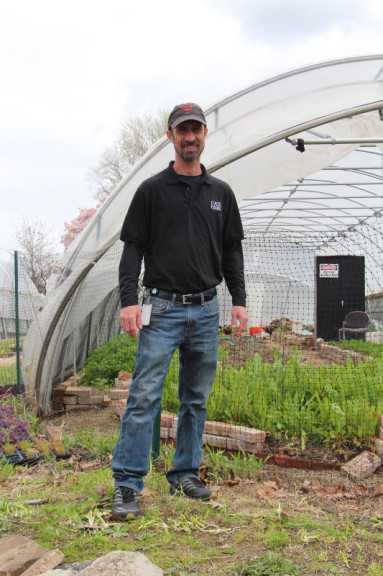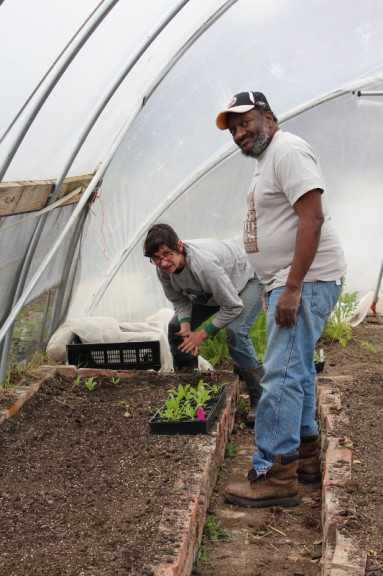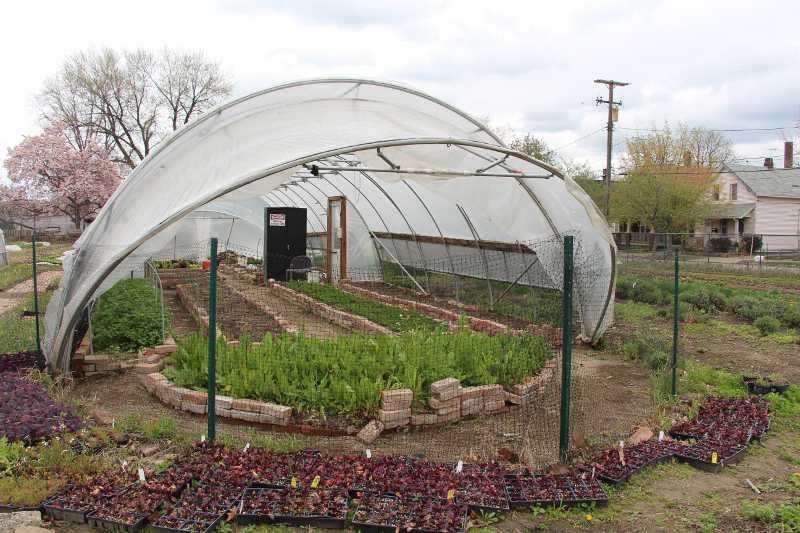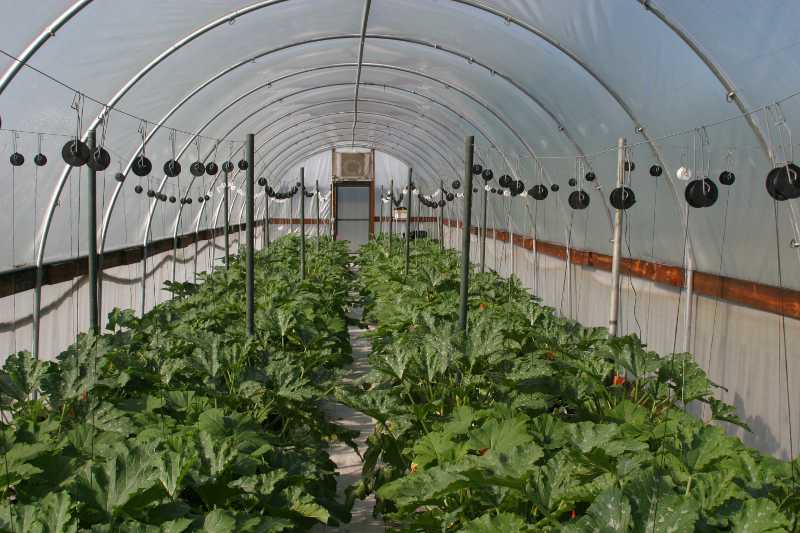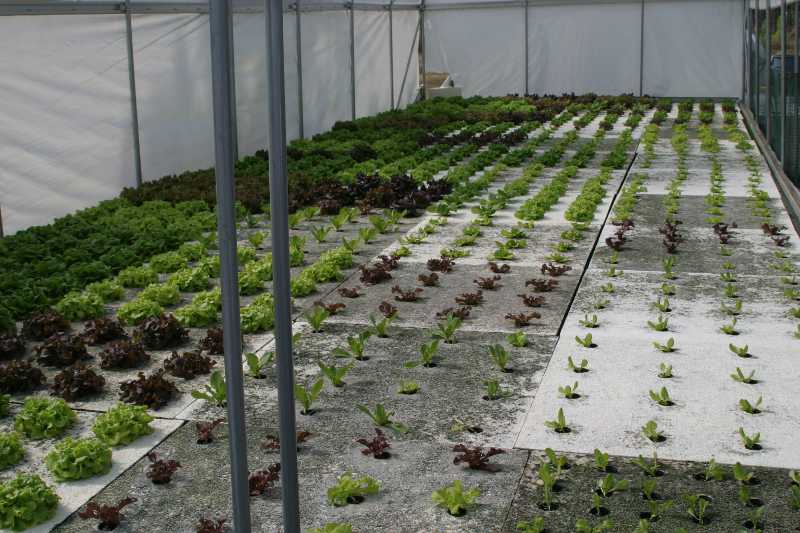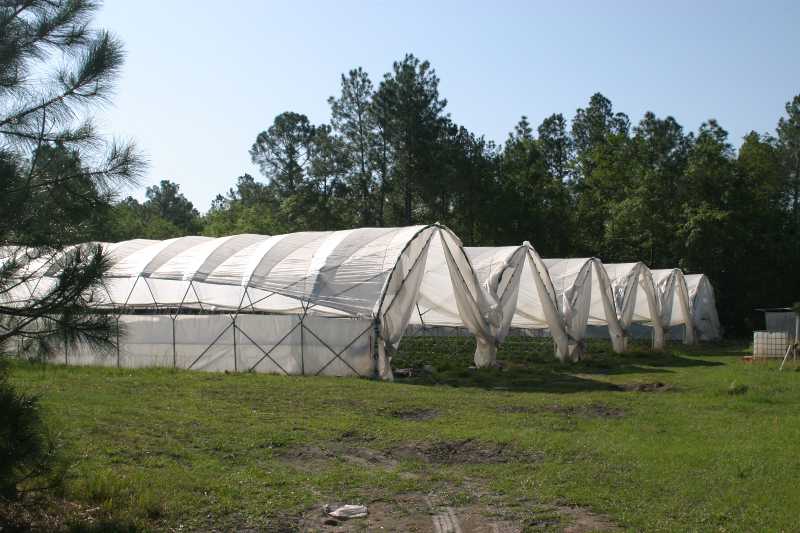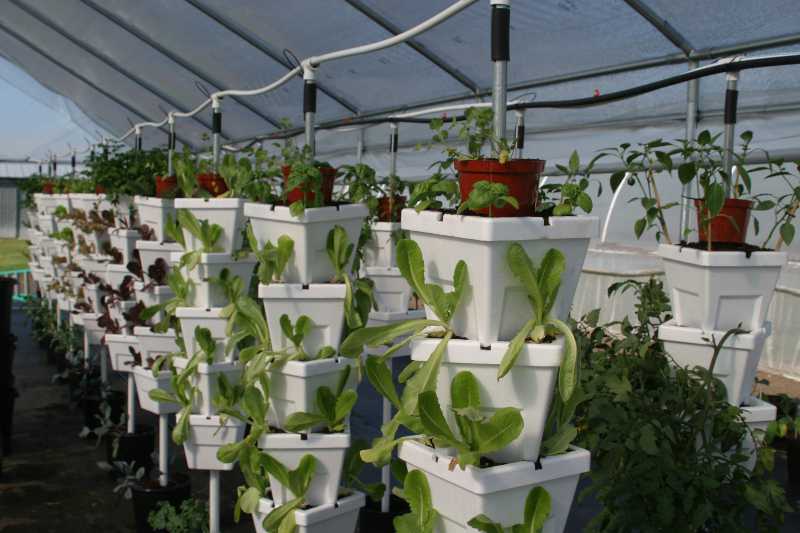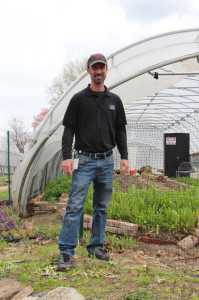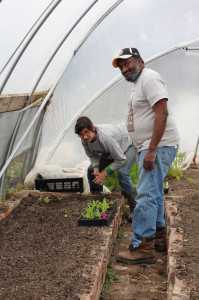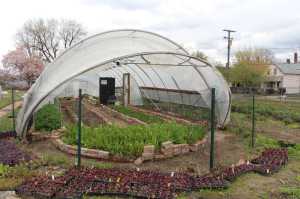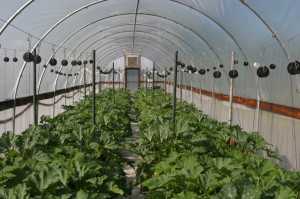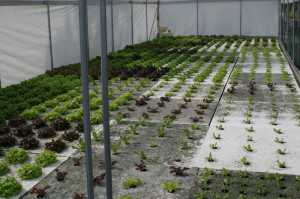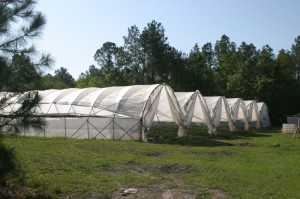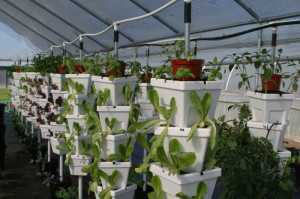Year-Round Production With High Tunnels

[blackoutgallery id=”73819″]
Producing crops year-round may be business as usual for growers in places like California and Florida, but for a small-scale organic operation in Southeast Ohio, it’s practically a miracle.
Thanks to the 10 unheated high tunnels Green Edge Gardens has installed on its 120-acre operation, the farm is able to produce a wide range of crops all year, even throughout the regions moderate to severe winter temperatures.
Owned by Becky and Kip Rondy and managed by Dan Kneier, Green Edge Gardens in Amesville, OH, delivers more than 200 Community Supported Agriculture (CSA) shares, with approximately 60% of its production dedicated to those CSAs.
“We have a winter and summer season of CSAs, eight full-time employees, five part-time people, and in the summertime we have up to four interns,” Becky Rondy says.
In its 10 tunnels, the operation has approximately 1 acre under production. In the summer, the Rondys grow basil, eggplant, summer squash, ginger, turmeric, peppers, salad mix, and cherry, heirloom, and slicer tomatoes. The crop lineup in the winter includes arugula, beets, carrots, collards, kale, bok choy, radishes, salad mix, spinach, and Swiss chard.
The Locavores Are Hungry
The locally grown movement is alive and well in Athens County where Green Edge Gardens is located, and Rondy attributes the farm’s steadily increasing sales to the growing interest in the trend.
“It’s been so great that we can’t keep up with demand,” she says.
In addition to the high tunnels, the farm has a glass house with microgreens and a grow room where several varieties of mushrooms are cultivated. Both are distributed through the operation’s CSA, as well as to wholesale markets including the year-round Athens Farmer’s Market, and to restaurants up to 75 miles north of Amesville. The farm partners with eight other local businesses that provide a mix of dairy products, fruit, baked goods, and more.
“In the winter, all the CSA items except the microgreens, mushrooms, and the summer-grown storage crops are from the high tunnels,” Rondy explains.
Summer grown storage crops include root vegetables such as potatoes, turnips, rutabagas, and winter squash.
“We try to always have a couple of root vegetables, salad mix, microgreens, mushrooms, and at least two bunches of fresh greens in each week’s CSA delivery,” Rondy says.
In an effort to provide more locally grown produce to people throughout the state, Green Edge Gardens partnered with a local non-profit, Rural Action, and developed a project with funds from USDA’s Sustainable Agriculture Research and Education (SARE) program to educate growers on winter high tunnel production. The farm hosted workshops from 2012-2014 with a total of 206 participants including 100 farmers, 14 community members, and 92 educators.
Orientation And Infrastructure
The Rondys have learned what works and doesn’t work with their tunnels through trial and error. Proper orientation was a lesson they had to learn the hard way. After positioning one of their 30-by-90 foot tunnels lengthwise against the prevailing wind and having it collapse, they’ve since oriented all of their tunnels with the narrow end facing the prevailing wind.
It was because of the wind that the Rondys opted to cement in their tunnels. “Because of the breeze and the wind that we get through the hollow, we didn’t want to take any chances with the tunnel being blown away. We’ve lost plastic a couple times in high winds,” she explains.
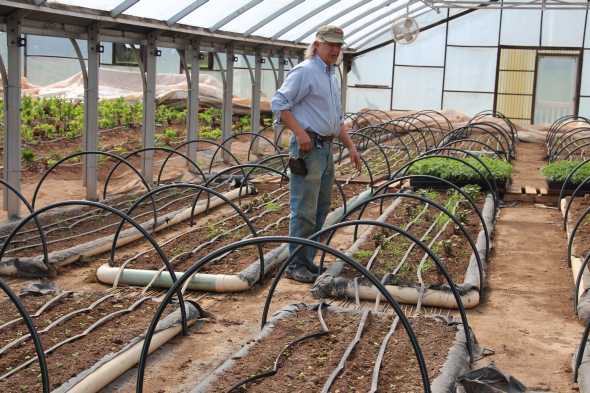
Kip standing in one of the Green Edge Gardens’ only gutter connected high tunnels. The farm experimented with gutter connected tunnels, but noticed that in the winter months they lost up to 3 feet of sunlight on either side of the gutter from shading. They’ve since spaced the other tunnels 20 feet apart.
Rondy says she technically refers to the tunnels as unheated greenhouses because they aren’t movable. However, because the structures are low-tech, featuring plastic roll-up sides and crops grown directly in the ground, for example, they mirror high tunnels in all other aspects.
Another hard lesson learned was the need to keep the tunnels disconnected and properly spaced apart.
“If the tunnels are too close to each other they can shadow one another,” Rondy says. “That’s another reason why we won’t ever do a gutter connect, because we’ve lost three feet of production area to shadow from the neighboring tunnel that way. It’s not so bad in the summertime, but in the winter it makes a big difference. Right now they’re probably 20 feet apart.”
Ventilation in high tunnels is crucial, and in the summer paying close attention to temperatures and how often the tunnels are ventilated can mean the difference between healthy crops and significant yield loss.
The low winter temperatures in Southeast Ohio have not offset the need for workers to pay close attention to ventilation.
“If the sun is out there in the wintertime you have to get those doors open. If you wait three hours to open a high tunnel on a sunny day, your vegetables will be cooked. The temperatures can reach 90° F in there if you don’t open up the tunnel. Depending on how cold the evenings are, sometimes we’ll leave the upper doors open, but it just depends on the winter,” Rondy says.
However, if the sun is not out in the winter, the Rondys take extra steps to retain heat. Workers cover the rows with a woven fabric when temperatures drop below 27° F, and with both fabric and plastic when temperatures drop below 25° F.
“Better and better floating row cover products allowed us to better protect the crops with less time and energy expense,” says farm manager Dan Kneier.
In earlier years, the covering system the farm used was made out of a fiber product that was spun, not woven. According to Rondy, the older covers held too much water, were heavy when wet, and were prone to tearing and leaving fibers on the harvested product.

Becky and Kip Rondy
Proper Planting And Harvesting Timing
Timing your plantings and harvests is another critical success factor when growing in high tunnels year-round, and according to Kneier, finding the best schedule for your site takes some trial and error.
“Generally speaking, getting a crop to maturity by mid-December will allow for a productive yield for the space,” he says.
The farm also practices succession planting, which is the practice of staggering plantings of crops, or planting crops with staggered maturity dates in an effort to extend harvest. Succession planting only works on specific crops, and Green Edge Gardens employs the practice with carrots, lettuce, and arugula, among others.
Apprenticeship Program
To be able to grow year-round and bring produce to market, Green Edge Gardens maintains a robust staff of employees and apprentices to manage the workload. For the farm’s summer season, which is April 1 to Nov. 15, the operation hires three to four full-time apprentices to work side-by-side with field crew to accomplish daily tasks.
Apprentices are trained in all aspects of production from bed preparation to planting, harvesting, weeding, and selling produce in the market. Work weeks for apprentices are typically around 45 hours, and the farm provides accommodations, food, and a weekly stipend. According to Rondy, having the apprentices on hand for the summer provides her staff some well-deserved relief after a long season.
“Usually in the summertime you end each day totally exhausted, and when winter comes, you say ‘No I just need these months to recuperate,’” Rondy explains. “By having other employees, people get days off, and they can then think about working through the winter because they’re not completely drained.”
High Rewards
High tunnels have proven to be a great success for Green Edge Gardens, and the ability for the operation to produce year-round has had the added bonus of encouraging a younger generation to participate in production.
“By having a steady income throughout the year, it makes it much more feasible that young growers can participate in farming. Having a year-round job is almost unheard of in agriculture,” Rondy says.
By ushering in the next generation of growers and catering to the locavore’s growing taste in local produce, Green Edge Gardens is well poised for continued success.
If you or someone you know is interested in the apprenticeship program with Green Edge Gardens, click here.




